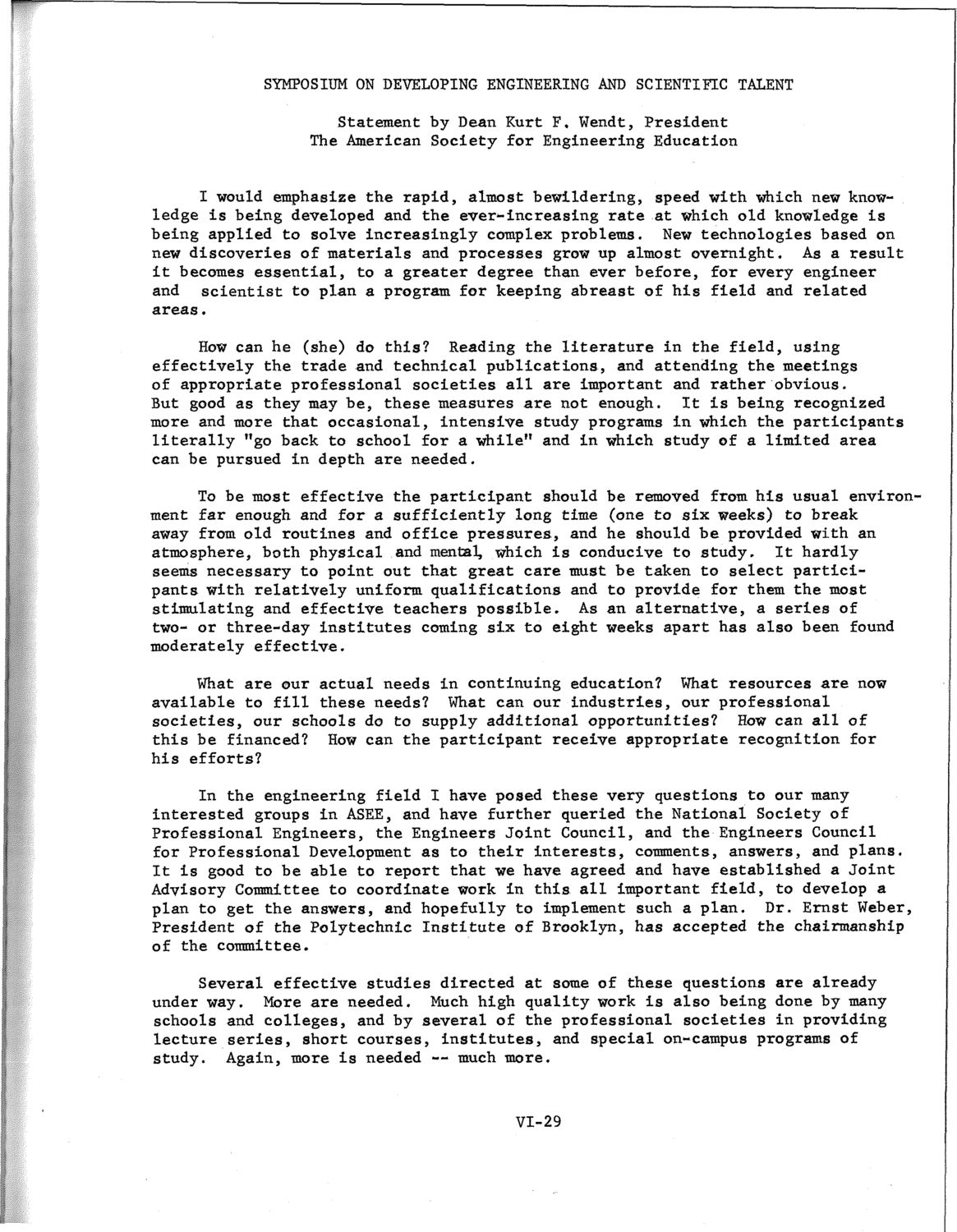| |
| |
Caption: SWE - Proceedings of the First International Conference of Women Engineers and Scientists
This is a reduced-resolution page image for fast online browsing.

EXTRACTED TEXT FROM PAGE:
SYMPOSIUM ON DEVELOPING ENGINEERING AND SCIENTIFIC TALENT Statement by Dean Kurt F. Wendt, President The American Society for Engineering Education I would emphasize the rapid, almost bewildering, speed with which new knowledge is being developed and the ever*-increasing rate at which old knowledge is being applied to solve increasingly complex problems. New technologies based on new discoveries of materials and processes grow up almost overnight. As a result it becomes essential, to a greater degree than ever before, for every engineer and scientist to plan a program for keeping abreast of his field and related areas. How can he (she) do this? Reading the literature in the field, using effectively the trade and technical publications, and attending the meetings of appropriate professional societies all are important and rather obvious. But good as they may be, these measures are not enough. It is being recognized more and more that occasional, intensive study programs in which the participants literally "go back to school for a while" and in which study of a limited area can be pursued in depth are needed. To be most effective the participant should be removed from his usual environment far enough and for a sufficiently long time (one to six weeks) to break away from old routines and office pressures, and he should be provided with an atmosphere, both physical and mental, which is conducive to study. It hardly seems necessary to point out that great care must be taken to select participants with relatively uniform qualifications and to provide for them the most stimulating and effective teachers possible. As an alternative, a series of two- or three-day institutes coming six to eight weeks apart has also been found moderately effective. What are our actual needs in continuing education? What resources are now available to fill these needs? What can our industries, our professional societies, our schools do to supply additional opportunities? How can all of this be financed? How can the participant receive appropriate recognition for his efforts? In the engineering field I have posed these very questions to our many interested groups in ASEE, and have further queried the National Society of Professional Engineers, the Engineers Joint Council, and the Engineers Council for Professional Development as to their interests, comments, answers, and plans. It is good to be able to report that we have agreed and have established a Joint Advisory Committee to coordinate work in this all important field, to develop a plan to get the answers, and hopefully to implement such a plan. Dr. Ernst Weber, President of the Polytechnic Institute of Brooklyn, has accepted the chairmanship of the committee. Several effective studies directed at some of these questions are already under way. More are needed. Much high quality work is also being done by many schools and colleges, and by several of the professional societies in providing lecture series, short courses, institutes, and special on-campus programs of study. Again, more is needed — much more. VI-29
| |